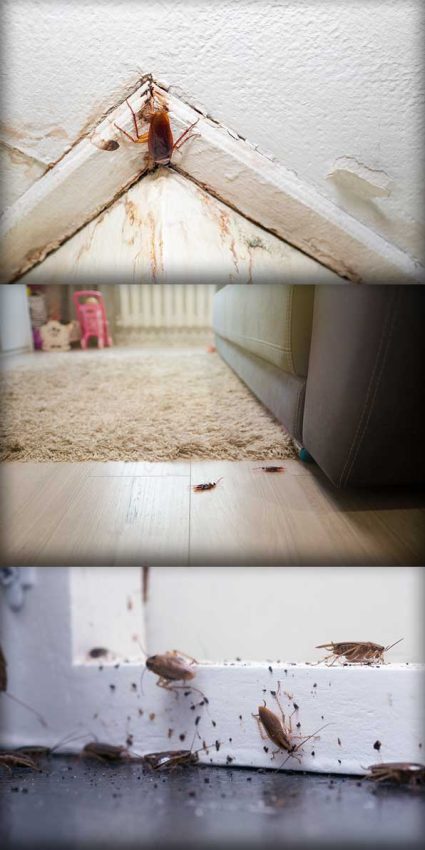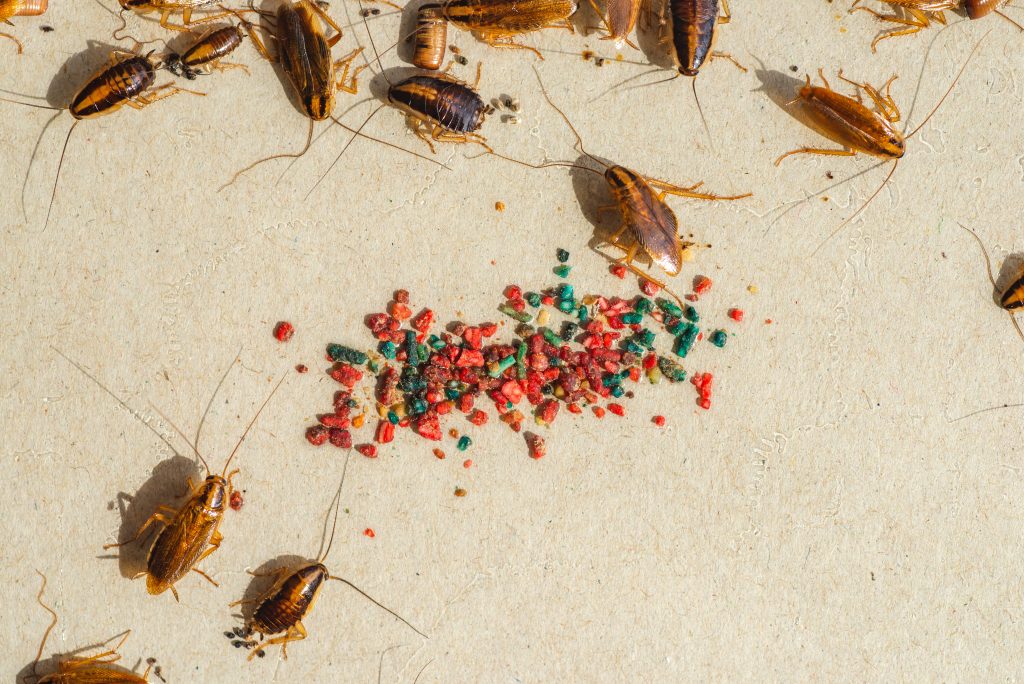Cockroach Control

Control & Prevention
The first step to cockroach control is education on what cockroaches are, and how they live. When you have cockroaches in your home you are presented with a variety of health concerns. Cockroaches are not just bugs that are an annoyance, they carry bacteria that are harmful to you and your family.
Bacteria on a cockroach triggers diarrhea, allergies, and fever. So, learning and understanding how to keep them out of your home is essential to every family. Unfortunately, without expert guidance and help, cockroaches can be extremely difficult to get rid of. This is why at EZ Pest Control we aim to educate you and eliminate your cockroach problem.

Where do they live?
Cockroaches are great at surviving even the harshest of environments. They hide during the day and are most active at night. Cockroaches live in families with an equal number of males and females. They are extremely sensitive to dehydration and tend to make their nests close to water sources.
Cockroaches are usually found in warm humid areas in the home but can sometimes be found elsewhere. Here are some examples of where you can find them in your home:
- Cabinets
- Underneath Furniture
- Drainpipes
- Boxes
- Inside walls
- Storage closets
- Crevices in the building
- Kitchen sinks
- Bathroom sinks
What do they eat?
Cockroaches are able to eat just about anything in your home. It is almost impossible to starve these pests out. The only essential item to a cockroach is water and humidity. However, let’s go over a few things that they like to consume:
- Books
- Soap
- Grease
- Glue
- Sweets
- Leather
The endless amount of food possibilities makes it so that cockroaches can survive in a home until the end of their life cycle.

Cockroach Control = Less Damage to your Home
Cockroaches are a pest that can essentially eat anything. And unfortunately, they do. They are known to cause damage to clothing, wallpaper, furniture, curtains and paperwork.
They can also cause damage by the bacteria they carry. Cockroaches spread bacteria over food and counters. Because of their activity they can contaminate anything they touch with pathogens that lead to salmonella, staphylococcus, and streptococcus.
Cockroach Control + Signs of Infestation
Cockroach control starts with prevention. Every homeowner can take steps that help to prevent an infestation. The first step is to make sure your home is clean and picked up. This means putting food away in sealed storage containers and cleaning under sinks and cabinets. The next step is to have a reliable pest control company.
Cockroach infestation can be hard to spot since they are mostly active at night. However, there are signs to look for that can indicate infestation.

Cockroaches can leave black smear marks on walls and floors.
This musty smell will become obvious when there is a larger population of cockroaches.
Cockroaches shed their outer bodies while growing.
They are cylindrical in appearance and usually have a black/brown color
Life Cycle
The life cycle of a cockroach starts as an egg and progresses to a nymph and then finally to an adult. Adult females can lay 10-55 eggs at a time.
Depending on the breed of cockroach, the eggs will hatch between one and two months. The adults lay the eggs in tight, warm, humid spaces. Because of the quantity of eggs and their endless food options, controlling cockroaches can be a difficult task without expert help.

Cockroach Control starts with Treatment
We understand how to provide excellent cockroach control and long-term treatment. We want to put our customers’ minds at ease with immediate results. This is why we have our experts come and inspect your property and diagnose the severity of the problem. Our experts have been trained to treat an immediate problem and provide long-term treatment so that our customers can live pest free. So, give us a call so that we can help you feel safe in your home.
Request your inspection now
Just fill out the contact form, and a representative of our team will be in touch shortly.
What pest do you need help with?
Please select to learn more